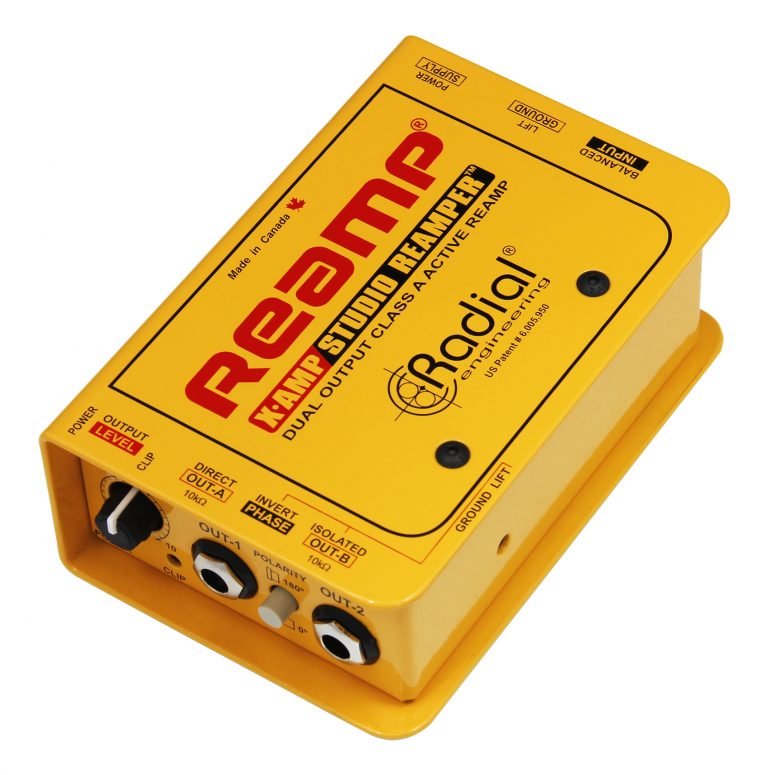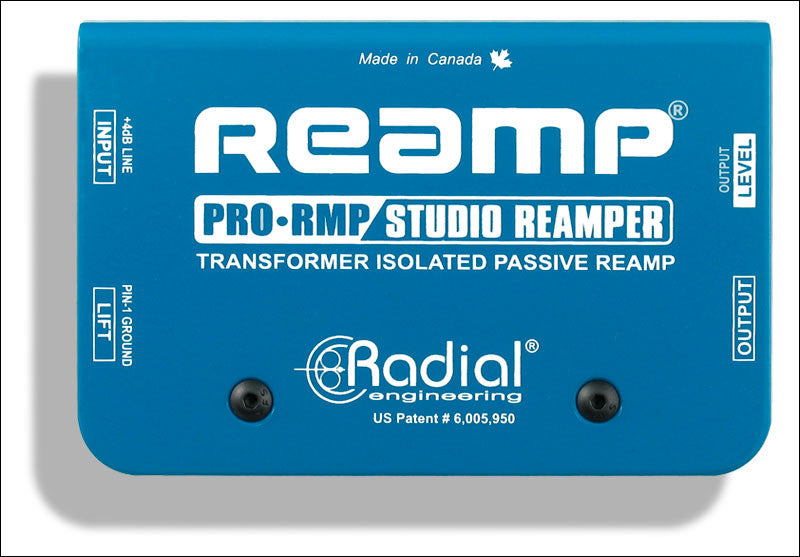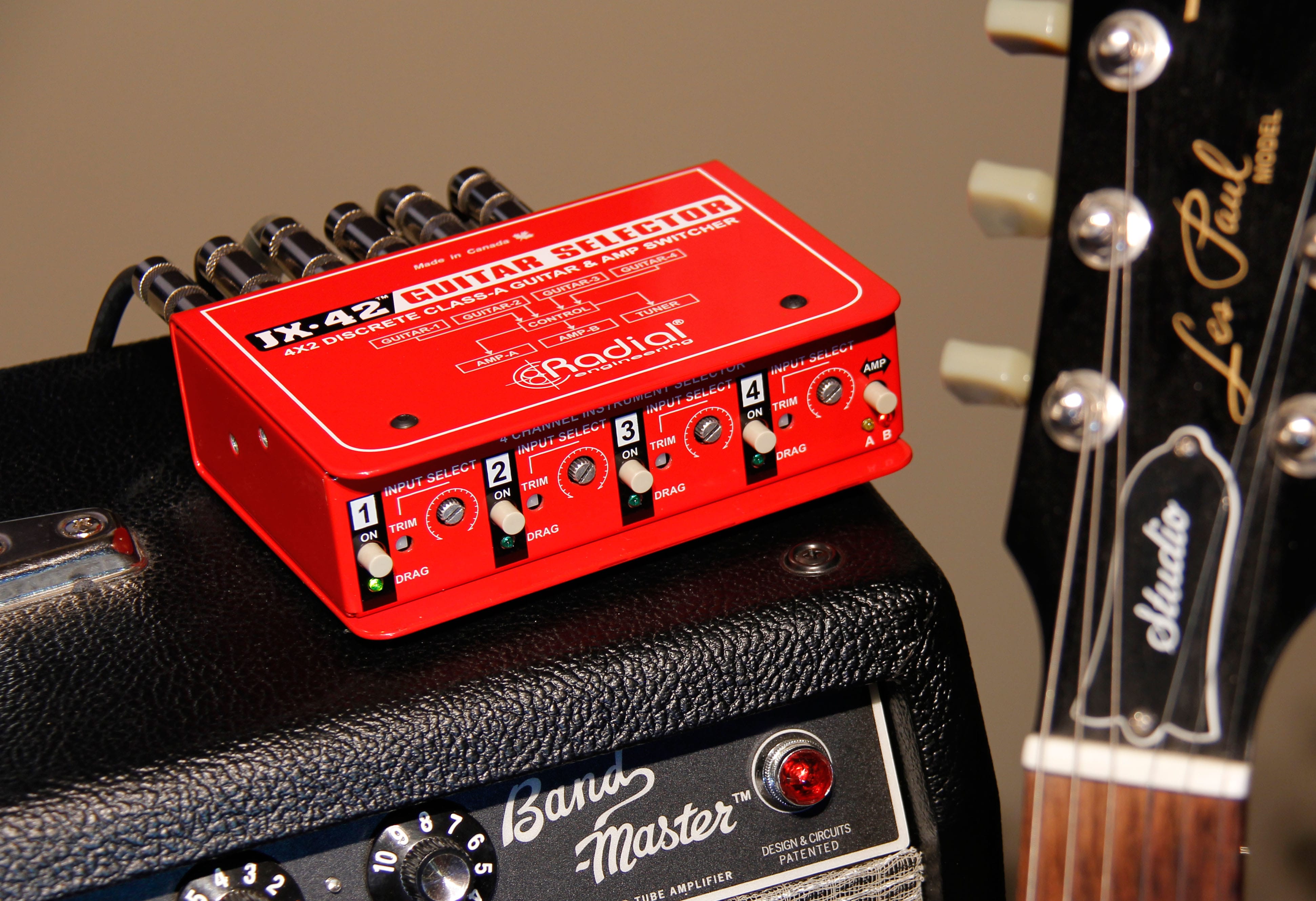

The microphone is also placed near guitar speaker and the new track will be recorded that will produce the processed and re-amplified track. Guitar amplifiers will be placed in a live room or an isolation booth of recording studio and set up in producing the right tonal quality such as room reverberation and distortion character. Then, the direct, dry and unprocessed guitar recording will be fed to the bridging device in re-recording the unprocessed performance of the guitarist through the dedicated guitar amplifier as well as external effects boxes. More often than not, the signal of the guitarist is sent to the guitar amp and recorder simultaneously, which provide the guitarist the proper amplifier ambience while tracking the dry signal. Oftentimes, this is achieved through connecting guitars into a Direct Input unit, which is fed to the recording console bypassing it through utilizing an outboard preamplifier. The guitarist records the unprocessed, dry, and unaffected track in the recording studio. It was also noted that the re-mixing of Let It Be of The Beatles by Phil Spector in year 1970 may have been re-recorded through the guitar amplifier. If this will wore down amplifier components, another amplifier will be used in recording the remaining work. The sound will be dialed-in for hours on the cranked guitar amplifier. Roger Nichols claimed to use a guitar in the re-recording process in year 1968 to spread the stress on the cranked tube amps around several amps. Its loudspeaker played back the recorded material while the microphone is recording the altered sound. Paul placed the loudspeaker at an end of the tunnel and a mic at its end. Mary Ford and Les Paul recorded layered guitar paths and vocal harmonies, which modifies tracks with effects like ambient reverb while recording the result together in the new track.

Later, Edgard Varese and Karrlheinz Stockhausen used the same techniques. In 1930s and 1940s, Pierre Schaeffer used recorded sounds including trains and consider playing them back with a bit of alteration and re-recording the result. The re-recording process was used throughout the origin of the recording studios. It is essential to check that mics used are in phase to get rid of the issues with the mix. Through pointing monitors away from each other, the image of stereo can be preserved well and the new depth may be added to tracks. Reamping is particular useful in softening stereo drum tracks. Through playing the dry signal through the main monitors of studio and using microphones in the room to capture ambience, professionals are able to make realistic reverbs as well as blend wet signal with original dry recording in achieving the right amount of depth. It is also often used in warming up dry tracks that often means adding filtering, distortion, complex yet interesting compression, and some pleasing effects. Some common reamping objectives are room tone, envelopes, EQ/filters, gating, resonance, and musically beneficial amplifier distortion. It can be also applied to some programs and instruments including synthesizers, virtual instruments, and recorded drums.

Reamping has evolved to include numerous applications.

This facilitates a separation of guitar that plays from the guitar amplifier processing, which was a record audio program previously and played back and recorded again where anyone can add ambience, effects, and modified tonality. Originally, this method was used mostly for a guitar. Reamping is actually the process often used in multitrack recording in which the recorded signal is routed back out of an editing environment as well as run through a reverb chamber or external processing.


 0 kommentar(er)
0 kommentar(er)
